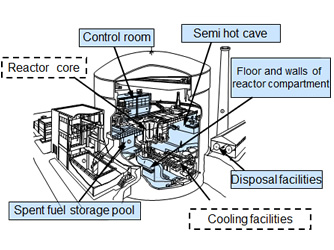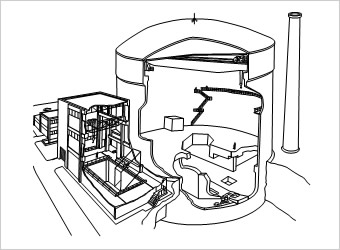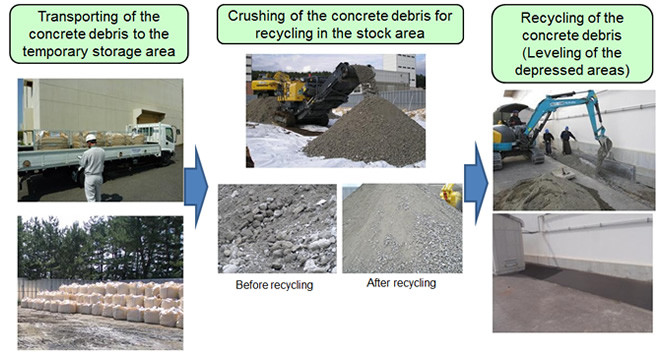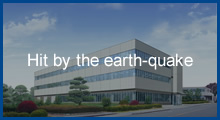Clearance of Concrete Debris
The Purpose of the Clearance System
The number of decommissioned nuclear facilities, such as nuclear power plants and experimental reactors, will increase with an increase in their years of operation. During decommissioning, in addition to radioactive waste and non-radioactive waste, a large amount of waste that is contaminated but does not require management as radioactive waste because its radioactivity level is below the clearance level, will be generated.
![]()
The recycling of materials generated from nuclear facilities is important from the viewpoint of effective utilization of resources and the formation of a recycling-based society, if the radioactivity concentration is below the clearance level.
![]()
→ When the government confirms that the radioactivity concentration of a material is below the clearance level, it can be handled as conventional industrial waste or valuables.
A fitting example of clearance at Nuclear Science Research Institute
We have been storing approximately 4,000 tons of very low-level radioactive concrete debris that was generated from the modification of the JRR-3 between 1985 and 1990 as radioactive wastes. At that time, the clearance system was not established under the Japanese regulatory law.
-
Outline of JRR-3 before modification
-
Reactor type : Tank type moderated and cooled by heavy water
Thermal output : 10 MW
Max. thermal neutron flux : approximately 3×1013 n/cm2・s
Configuration of reactor core: column( approx. φ260×H210 cm)
Fuel : Natural U metal, 1.5% enriched UO2 pellets
First critical : 12, Sep.,1962
Total operation time : 47,137 hours
Total thermal output : 419,073.5 MWh
-
Modification Work for JRR-3
-
Period : 1985–1989
Method: To reuse the nuclear reactor building, the old reactor core was removed in one piece,
and then the new reactor core was installed.Classification of radioactive wastes from
the modification:except 3H 3H low-level radioactive
wastes> 3.7 Bq/g > 7.4×102 Bq/g very low-level
radioactive wastes≦≦ 3.7 Bq/g ≦ 7.4×102 Bq/g

Before removal of reactor
![]()

After removal
![]()
The removal of the main body of the reactor core generated a large amount of very low-level concrete debris.
major sources of waste:Floors and walls of the reactor compartment, control room, semi hot cave, etc.
![]()
Clearance system objects
The present state of Concrete Clearance
This case is the first example of the recycling of cleared concrete debris in Japan. It is expected that our procedures will contribute to future decommissioning of nuclear facilities in a reasonable way and promote formation of a recycling-oriented society.
◎ FY2005
Investigation of radioactive contamination and establishment of a method for measuring and evaluating the radioactivity concentration
http://jolissrch-inter.tokai-sc.jaea.go.jp/pdfdata/JAEA-Technology-2009-060.pdf![]()
◎ Oct. 2008
Governmental authorization of the method for measuring and evaluating the radioactivity concentration
http://jolissrch-inter.tokai-sc.jaea.go.jp/pdfdata/JAEA-Technology-2011-003.pdf![]()
FY2009
Measurement and evaluation of the radioactivity concentration in concrete debris
![]()
Confirmation of the accuracy of our measurement and evaluation results by the government
- ・Applications for confirmation are planned for submittal for each of 12 storage pits.
- ・The government already confirmed 6 applications (approximately 2, 250 tons) by Jan. 2013.
- ・NSRI will finish the measurement and evaluation of the radioactivity concentration in the concrete by FY 2014.
![]()
Processing for recycling
![]()
Recycling
Public works materials for leveling of depressed areas by an earthquake and the base course of parking lots at the Nuclear Science Research Institute (Result FY 2011: about 600 tons, Plan FY 2012 :about 1,300 tons)
An example of recycling of cleared concrete debris
- We crushed the concrete debris in order to satisfy the quality requirements for RC40 after regulatory authorization for clearance.
- We recycled the crushed concrete debris as a backfilling material for depressed areas around buildings that were caused by the earthquake on March 11, 2011.








